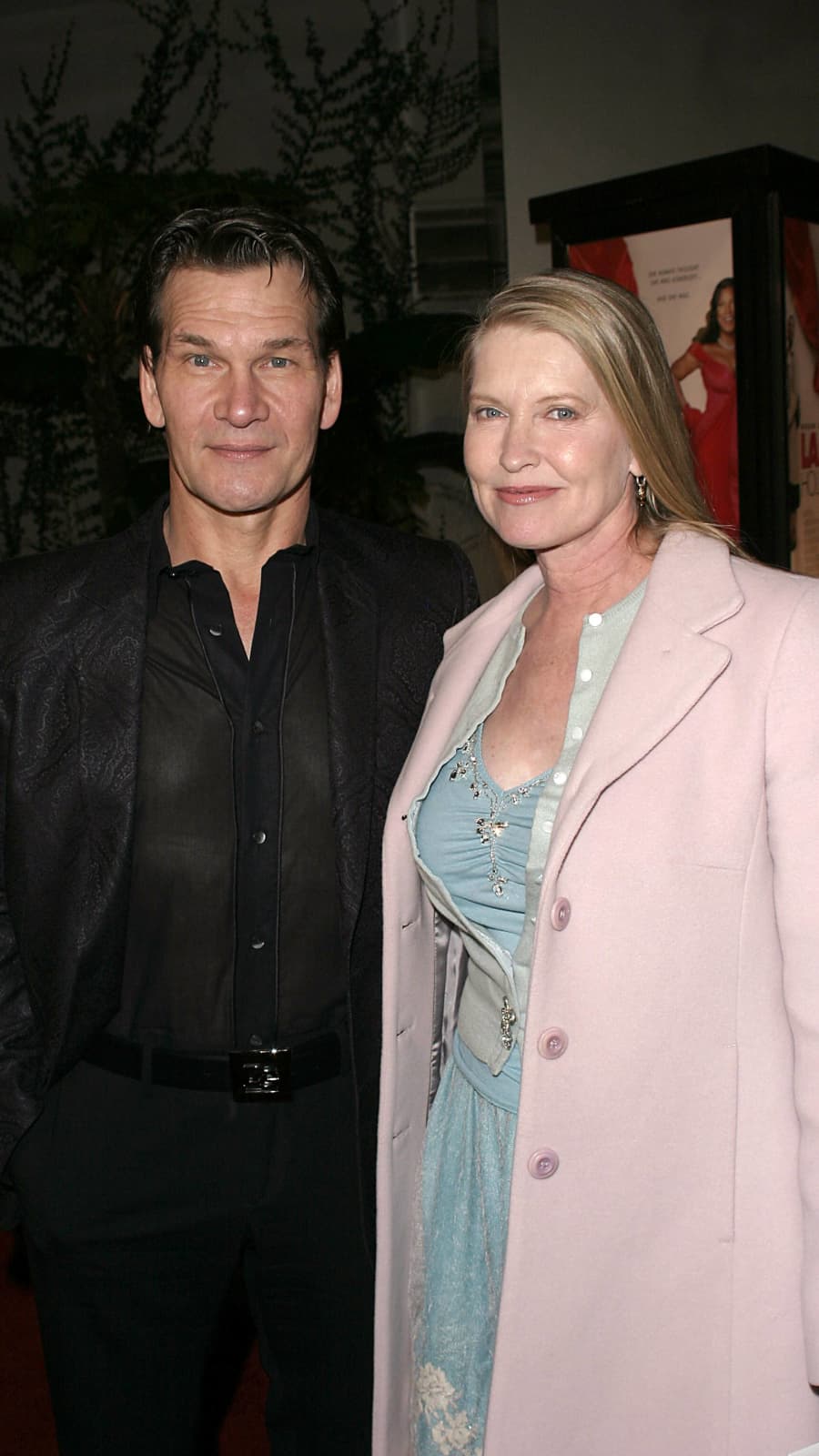Exploring Sean Kyle Swayze: A Look Beyond The Name
Have you ever stopped to think about a name, really consider what it means, where it comes from, or how it shapes our view of someone? It's a bit like peeling back the layers of an onion, isn't it? When we hear a name like Sean Kyle Swayze, there's a certain ring to it, a combination that might make you curious. What's the story behind such a name? Who is this person, and what can we learn just from the way their name sounds, or what it implies? So, you know, it's pretty interesting how names can spark our imagination and make us want to know more.
In a way, every name carries a piece of history, a bit of culture, and sometimes, even a few linguistic quirks. We often focus on the individual, which is completely natural, but there's also a whole world of meaning wrapped up in the words we use to identify ourselves and others. This article, then, is that chance to explore some of those deeper layers, to really get into what a name like Sean Kyle Swayze can tell us, not just about a person, but about language itself.
Today, we're going to take a bit of a closer look at the name Sean, its rich background, and some of the ways language works, all while keeping Sean Kyle Swayze in mind as a compelling example. It's almost like we're going on a linguistic adventure, really, to uncover some fascinating facts that might just change how you think about names and the words we use every single day. We'll touch on everything from Irish origins to common grammar points, making it, you know, a pretty informative read.
Table of Contents
- Who is Sean Kyle Swayze?
- Biography
- Personal Details
- The Name "Sean": A Look at its Roots
- Irish Origins and English Connections
- Pronunciation and Linguistic Nuances
- The Evolution of Names
- Language in the Spotlight: Grammar and Public Discourse
- Navigating Pronoun Use: "Me" vs. "I"
- Understanding Contractions: "He's" and More
- The Art of Communication
- Beyond the Name: Identity and Public Figures
- Names as Identity Markers
- Public Perception and Language
- Frequently Asked Questions
Who is Sean Kyle Swayze?
When a name like Sean Kyle Swayze comes up, it naturally piques our interest. People are always curious about individuals, especially those who might be in the public eye or have a story worth telling. While this piece focuses on the broader context of the name itself, and how language works around it, it's worth acknowledging that the specific biographical details about a person named Sean Kyle Swayze are not available from the information provided for this discussion. So, you know, we're looking at the name as a concept here.
Biography
Specific biographical information about a person named Sean Kyle Swayze, including their background, career path, or notable achievements, isn't something we can detail from the available source material. Typically, a biography would cover life events, professional milestones, and personal journey. Without that specific information, we can only talk generally about the significance of names in a person's life. It's really interesting, in a way, how much we associate a name with a life story, isn't it?
Personal Details
Just like with biographical facts, the provided text doesn't give us any personal details for a specific Sean Kyle Swayze. Things like birthdate, birthplace, or family connections would usually go here. We're exploring the linguistic aspects of the name "Sean" itself, and how language shapes our general understanding. This table is here to show what kind of information would typically be included if we had those specifics. It's almost like a placeholder, really.
| Detail | Information |
|---|---|
| Full Name | Sean Kyle Swayze |
| Date of Birth | Information not available from source |
| Place of Birth | Information not available from source |
| Nationality | Information not available from source |
| Occupation | Information not available from source |
| Known For | Information not available from source |
The Name "Sean": A Look at its Roots
The name "Sean" is, you know, pretty fascinating when you dig into its background. It's a name that carries a lot of history and cultural weight, especially for those interested in Irish heritage. In some respects, understanding the name helps us appreciate the person who bears it, like a Sean Kyle Swayze. It's not just a collection of letters; it's a connection to centuries of tradition and language evolution.
Irish Origins and English Connections
So, the name "Sean" is actually a hibernization of the English name "John." What that means is, it's a transliteration of "John" into a form that can be pronounced in Irish and written with the Irish alphabet. Nowadays, that's simply a version of the Roman alphabet, but the process itself is a pretty neat example of how languages adapt names. It's like taking a familiar tune and giving it a distinct, local flavor, which is that, really, what names do.
Because "Sean" is an Irish name, it follows a completely different set of rules compared to how English names might change or evolve. For instance, you might wonder why "Robert" becomes "Bob" or "John" sometimes becomes "Jack." These are often historical nicknames or diminutives that developed over time within English. "Sean," however, retains its distinct Irish identity, and its variations, like "Seán" or "Séan," reflect specific Irish orthography and pronunciation. It's almost like a direct line to a rich linguistic past, you know?
Pronunciation and Linguistic Nuances
The way "Sean" is pronounced, especially in its original Irish forms like "Seán" or "Séan," gives us a bit of a peek into Irish phonetics. While it's generally pronounced "Shawn" in English-speaking countries, the Irish spellings guide a speaker to a more authentic sound. This distinction is, you know, pretty important for those who value the cultural accuracy of names. It highlights how spelling can really guide pronunciation, even across different language systems.
Consider, too, that the way a name is written or spoken can affect how it's perceived. A name like "Sean" might sound common, but its Irish roots give it a certain depth. It's a subtle thing, but it does make a difference in how people connect with a name. This is, you know, why understanding the nuances of a name's origin can be so rewarding. It adds layers to our appreciation of individuals like Sean Kyle Swayze.
The Evolution of Names
Names, in a way, are living things. They change, they adapt, and they travel across cultures. The journey of "John" becoming "Sean" is just one example of this ongoing process. It shows how names are not static labels but rather dynamic elements of language that reflect historical connections and cultural exchanges. This evolution is, you know, pretty much always happening, even if we don't always notice it.
Every name, then, has its own unique story, a path it has traveled through time and different linguistic environments. Understanding this helps us appreciate the richness of our own language and the languages of others. It's a reminder that words, including names, carry echoes of the past, connecting us to a broader human narrative. And that, in some respects, is a very cool thing to think about.
Language in the Spotlight: Grammar and Public Discourse
Beyond the origin of a name like Sean, the way we talk about people, especially public figures, often brings up interesting points about language use. Our everyday conversations, and even formal writing, are full of subtle rules and common tendencies. It's like, you know, a constant dance with grammar, and sometimes we get the steps a little mixed up. This is something that affects how we communicate about anyone, including a Sean Kyle Swayze.
Navigating Pronoun Use: "Me" vs. "I"
One common area where people sometimes get a bit tangled up is with pronouns, particularly "me" and "I." For example, you might hear someone say, "They went to the game with S." or "My wife and I's seafood collaboration dinner." The correct formal way to say it is "with John and me" or "with me and John," though the first one is typically preferred in print or in school settings. Saying "with me and John" sounds a little informal because of this style choice. It's a subtle distinction, but it matters in formal writing, you know?
It's also worth noting that "with John and I" is actually formally incorrect in English. Prepositions in English usually take the accusative case, which means "me" is the right choice after a preposition. However, there's a tendency nowadays for people to use "I" in these situations, perhaps out of a sense of courtesy to put themselves last in a list of nouns. This is, you know, a pretty common mistake, but it's one that grammar guides often point out.
This little linguistic detail is something that, like, you know, often comes up in discussions. It shows how language is always shifting, with formal rules sometimes clashing with common usage. For someone like Sean Kyle Swayze, if they were a public speaker or writer, these small grammatical points could, arguably, become a topic of discussion among keen observers of language. It's a bit of a balancing act, really.
Understanding Contractions: "He's" and More
Another interesting point from the way we talk about people involves contractions, especially "he's." You do use "he's" for "he is" and "he has." For example, "He's going to the store" (he is) or "He's finished his work" (he has). You also use "he's got something" for "he has got something." However, you generally do not use "he's something" for "he has something" in standard English. For instance, you wouldn't typically say "He's a car" to mean "He has a car." This is, you know, a pretty clear rule for most speakers.
There's a note that, according to some, this usage might be allowed in certain parts of the world, which just goes to show how varied English can be across different regions. So, the first two sentences you might propose, like "He's running late" or "He's found a solution," are typically correct. But the third one, like "He's a new phone" (meaning he has a new phone), would generally be considered incorrect in many standard English contexts. It's a subtle point, but it does highlight how specific language can be, you know?
These little grammatical rules, while seemingly minor, actually play a big part in how clear and effective our communication is. When we talk about public figures, or really anyone, using language precisely helps convey our message without ambiguity. It's a skill that, you know, pretty much everyone can benefit from, whether they're discussing Sean Kyle Swayze or just chatting with a friend.
The Art of Communication
Ultimately, language is about connection. It's about getting our ideas across, sharing stories, and understanding each other. The rules of grammar and the history of names are just tools that help us do that more effectively. When we consider a name like Sean Kyle Swayze, we're not just thinking about a person; we're also thinking about the words we use to describe them, to understand them, and to place them within our shared linguistic world. It's, you know, a pretty powerful thing, when you stop to think about it.
The way we choose our words, whether it's the correct pronoun or the right contraction, can shape how our message is received. This is especially true when discussing individuals who capture public attention. Clear and thoughtful communication, then, becomes a sort of art form, allowing us to convey respect, accuracy, and nuance. This is, you know, why paying attention to these details can be so rewarding.
Beyond the Name: Identity and Public Figures
A name is so much more than just a label; it's a fundamental part of a person's identity. For someone like Sean Kyle Swayze, or anyone else, their name is often the first piece of information we get about them. It's what we use to call them, to refer to them, and to connect with them. This is, you know, a pretty universal experience.
Names as Identity Markers
Names, in a way, are like personal flags. They can signal heritage, family ties, and even aspirations. The name "Sean," with its deep Irish roots, carries a certain cultural resonance. When combined with "Kyle" and "Swayze," it creates a unique combination that, for many, might evoke specific images or associations. It's a bit like a personal brand, really, that we carry with us through life.
Consider how names can also influence how others perceive us, even before they know us. A name can suggest a certain background, a particular era, or even a personality type. While these are often just assumptions, they show the power that names hold in shaping our initial impressions. This is, you know, a pretty fascinating aspect of human psychology.
For individuals in the public eye, their name becomes even more significant. It's how they are recognized, how their work is attributed, and how they are discussed. The public discourse around a name can, you know, pretty much define how that person is understood by a wider audience. Learn more about personal branding on our site, and link to this page understanding identity in the modern world.
Public Perception and Language
The language we use to talk about public figures, including their names, shapes their public perception. The choice of words, the grammatical structures, and even the subtle implications of phrases can influence how a person is seen by millions. It's a responsibility, in a way, for those who write or speak about others to use language carefully and accurately. This is, you know, something that every journalist or commentator grapples with.
When discussing someone like Sean Kyle Swayze, the way their name is presented, whether in headlines or in casual conversation, contributes to the overall narrative. This is why clarity and accuracy in language are so important. It helps to ensure that the focus remains on the individual's contributions and story, rather than on linguistic missteps or misunderstandings. It's almost like building a clear picture with words, really.
Ultimately, the connection between a name, identity, and language is a rich and complex one. It reminds us that every word carries weight, and every name tells a story, even if we only have a glimpse of it. To learn more about the broader impact of names and language, you might explore resources like the Oxford English Dictionary, which is, you know, a pretty comprehensive source for linguistic history.
Frequently Asked Questions
What is the origin of the name Sean?
The name "Sean" is an Irish name that comes from the English name "John." It's a process called hibernization, which basically means it's been adapted so it can be pronounced and written using the Irish alphabet. So, it's like a direct Irish version of "John," which is, you know, pretty cool.
Why do English names sometimes change, like John to Jack?
English names like "John" changing to "Jack" or "Robert" to "Bob" are often due to historical nicknames or diminutives that developed over time. These are, you know, pretty common in English and reflect long-standing linguistic trends, unlike "Sean" which is a direct transliteration.
Is it correct to say "with John and I"?
Formally speaking, "with John and I" is not correct in English. Prepositions, like "with," generally take the accusative case, so the correct form is "with John and me." However, you know, there's a tendency nowadays for people to use "I" in such phrases, perhaps out of politeness or habit, but it's considered informal in many contexts.
- Is Emily Compagno Married
- Harry Connick Jr Stroke
- Jason Luv Hospitalized
- Mike Tyson Punch Psi
- Teach Me First Comic Free

Sean Kyle Swayze - BiographON

Sean Kyle Swayze Relationship - wikibiographics

Sean Kyle Swayze Age, Biography, Height, Net Worth, Family & Facts